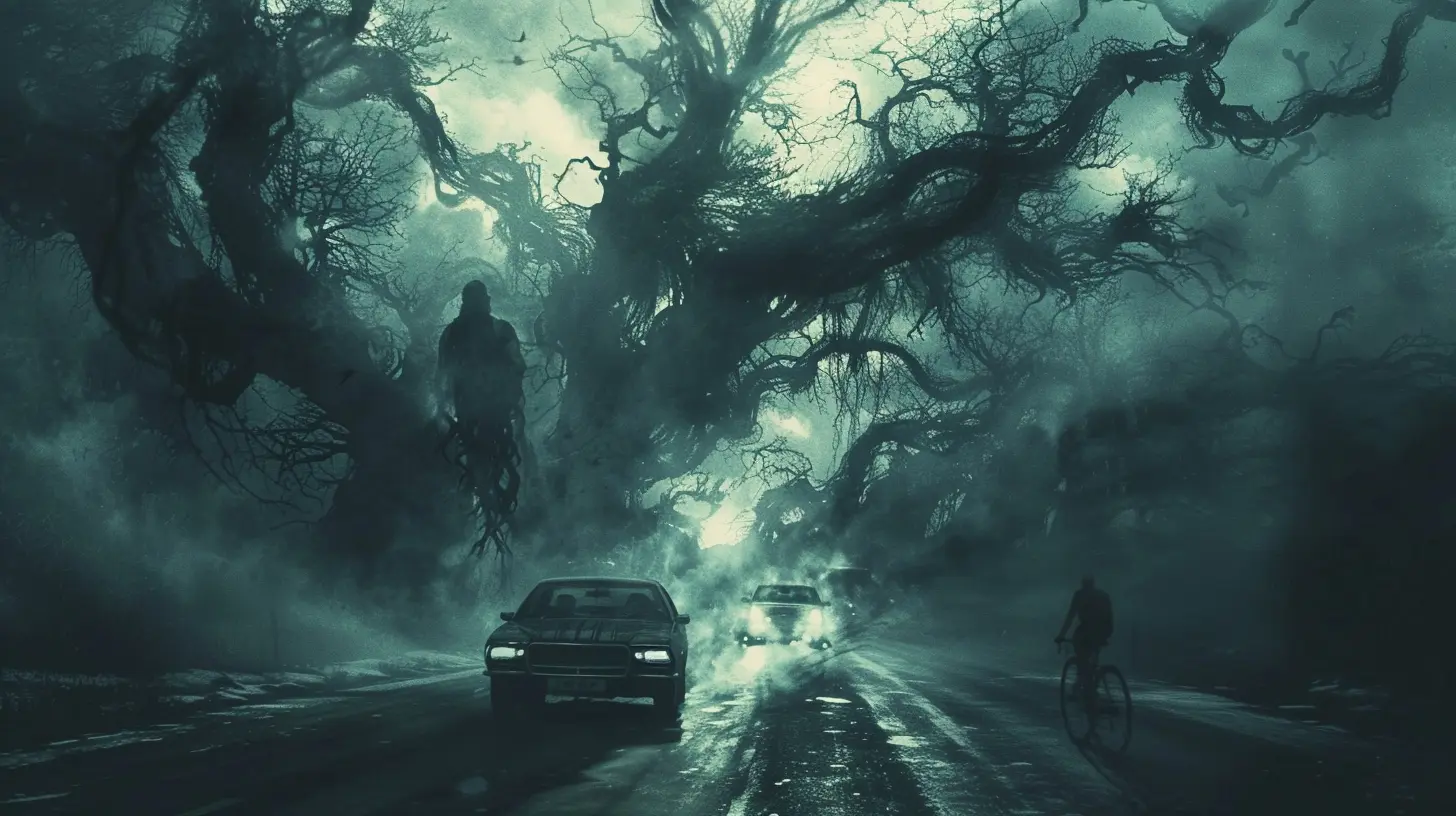Fear of Driving: Understanding and Conquering Vehophobia
30 June 2025
Let’s face it—driving can be terrifying. The open road may feel like freedom for some, but for others, it's a source of overwhelming anxiety. If that sounds like you, you’re not alone. The fear of driving, also known as vehophobia, affects thousands of people around the world. And if your palms get sweaty at the thought of merging onto a highway or navigating a busy intersection, you might be dealing with more than just typical nerves.
But here’s the good news: You don't have to stay stuck in the passenger seat forever. With the right understanding and tools, you can reclaim control of the wheel—both literally and emotionally.
Let’s dive deep into what vehophobia really is, how it shows up, why it happens, and how you can overcome it—step by step.
What Exactly Is Vehophobia?
Vehophobia is the intense fear of driving a vehicle. It’s more than just being a little nervous before a driving test or feeling slightly uneasy on unfamiliar roads. This fear can be paralyzing and, in some cases, might prevent someone from driving altogether.While it might sound uncommon, vehophobia is actually a type of specific phobia. It falls under the umbrella of anxiety disorders, similar to fears of flying, heights, or spiders.
Some people fear driving on highways. Others dread night driving, bridges, tunnels, or even driving alone. And for some, the fear isn’t about their own skills—it’s about other drivers, unpredictable conditions, or the fear of panic attacks striking while behind the wheel.
Symptoms of Driving Anxiety
It’s important to identify the signs before they spiral out of control. Fear doesn’t always show up waving a red flag. Sometimes, it creeps in quietly, whispering doubts that grow louder over time.Here are some common symptoms:
- Racing heart or palpitations when thinking about driving
- Sweaty palms or shortness of breath
- Dizziness or lightheadedness
- Tightness in the chest
- A strong desire to avoid driving situations
- Feeling detached from reality (yes, that’s called derealization, and it can be terrifying while driving!)
- Panic attacks or extreme anxiety while on the road
Sound familiar? If you're nodding your head, keep reading—there's light at the end of this tunnel.
Common Triggers of Vehophobia
Vehophobia doesn’t come out of nowhere. It's usually rooted in specific experiences, thoughts, or even biological predisposition.Here are the most common triggers:
1. A Past Traumatic Experience
If you've ever been in a car accident, even a minor one, that experience might have left a psychological scar. Your brain links driving with danger and sets off alarm bells every time you get behind the wheel.2. Witnessing an Accident
Even if you weren’t directly involved, witnessing a serious crash can stick in your memory and make driving feel unsafe.3. Generalized Anxiety Disorder (GAD)
Sometimes, vehophobia is a symptom of a broader anxiety condition. If you’re prone to overthinking or catastrophizing, driving can seem like a minefield of things that could go wrong.4. Lack of Driving Experience
New drivers—especially those who got their license later in life—might feel overwhelmed by the complexity of driving. That insecurity can quickly morph into full-blown fear.5. Fear of Losing Control
Driving is all about multitasking. For some, the idea of losing control—of the car or their emotions—is terrifying. It’s like being on a rollercoaster with no brakes.
Why Vehophobia Lingers
Ever wonder why some people shake it off after a fender bender, while others avoid driving for years? The difference often lies in how your mind processes fear.Fight or Flight On Overdrive
When you perceive a threat, your body kicks into survival mode. That makes sense when you're facing a tiger in the wild, but not so much when you're trying to parallel park.Your brain’s fear center—aka the amygdala—starts throwing out false alarms. Over time, your brain wires itself to equate driving with danger. Avoidance feels like relief, which only reinforces the phobia.
Negative Thoughts on Repeat
Thoughts are powerful. If you keep telling yourself, “I’ll lose control,” “I’ll crash,” or “I’ll have a panic attack,” your body believes it. These automatic negative thoughts build a loop that’s hard to break without some intentional rewiring.How to Conquer the Fear of Driving
Alright, let’s get to the best part: Overcoming vehophobia is absolutely possible. It takes patience, consistency, and sometimes a little help. But people do it every day. You can too.Here’s your roadmap to facing your fear—one mile at a time.
1. Acknowledge the Fear (Without Judging It)
First things first—don’t beat yourself up. Fear is a natural human emotion. Acknowledging it is the first real step to change. Replace self-judgment with self-compassion.Try saying: “I feel anxious about driving right now, but it doesn’t mean I always will.”
2. Learn Some Grounding Techniques
When anxiety hits while driving, you need tools to bring yourself back to the present.Some effective grounding methods include:
- 5-4-3-2-1 Technique: Name 5 things you can see, 4 things you can feel, 3 things you can hear, 2 things you can smell, and 1 you can taste.
- Deep Breathing: Inhale for 4 seconds, hold for 4, exhale for 6. Repeat.
- Mantras: Repeat calming affirmations like “I am in control” or “I am safe.”
Practice these outside the car first so you're ready when you need them.
3. Gradual Exposure (Start Small)
You don’t need to hit the freeway on day one. Ease into it.Here’s how:
1. Sit in the driver’s seat without driving.
2. Start the engine and practice deep breathing.
3. Drive around the block at a quiet time of day.
4. Gradually increase distance and complexity.
Go at your own pace. Celebrate the small wins—they matter more than you think.
4. Hire a Driving Coach or Take a Refresher Course
A professional instructor can help you feel safer and more in control. Plus, it helps to practice with someone who won’t judge you or panic if you make a mistake.Look for someone with experience in helping anxious drivers. Having a calm presence beside you can make a huge difference.
5. Challenge Your Thoughts
Next time a scary thought pops up, ask yourself:- Is this thought 100% true?
- What’s the worst that could happen, and how would I handle it?
- Have I successfully driven before?
Don’t believe everything you think. Your brain can be a drama queen sometimes.
6. Consider Therapy
If driving fear is affecting your quality of life, therapy might be your best ally. Cognitive Behavioral Therapy (CBT) is especially effective for phobias and anxiety.Through CBT, you’ll learn how to identify irrational thoughts and replace them with healthier, more realistic ones.
Bonus: Therapists aren’t just for deep, dark trauma. They’re great for coaching you through everyday challenges—like driving on the highway without having a meltdown.
When to Seek Professional Help
If fear keeps you from getting to work, taking your kids to school, or living your life, it's time to get support.Look out for these signs:
- You've stopped driving completely for more than a few months
- You rely heavily on others for transportation
- You experience panic attacks at just the thought of driving
- You've tried everything and still feel stuck
Help is out there. You don’t have to suffer in silence.
Real Talk: You Are Not Your Fear
Let’s wrap this up with a little truth bomb.Vehophobia doesn’t define you. Fear is just a feeling—not a fact. It doesn’t mean you’re weak, incapable, or broken. It just means your brain has been a little overprotective.
So, be patient with yourself. Take tiny steps. Meet fear with curiosity instead of resistance. And remember: confidence behind the wheel isn’t built overnight—it’s built one brave mile at a time.
You’ve got this.
Final Thoughts
Conquering the fear of driving isn’t about becoming fearless—it’s about learning how to move forward despite the fear. Vehophobia can feel like a scary monster, but most monsters shrink when you shine a light on them.So if you're reading this and thinking, "Yeah, but I don’t know if I ever can..."—let me tell you something.
Yes, you can.
And when you do, the freedom you’ll feel? It’s gonna be worth every single effort.
all images in this post were generated using AI tools
Category:
PhobiasAuthor:

Matilda Whitley
Discussion
rate this article
2 comments
Joel Clark
This article offers a compassionate perspective on vehophobia, helping those struggling with the fear of driving feel understood. By exploring the roots of this anxiety and providing practical strategies for overcoming it, you empower readers to take gradual steps toward regaining control and confidence.
November 11, 2025 at 4:07 AM

Matilda Whitley
Thank you for your thoughtful comment! I'm glad to hear the article resonated with you and provided support for those facing vehophobia.
Celine Phillips
Absolutely love this article! 🚗💖 It's inspiring to see how understanding vehophobia can empower individuals to reclaim their confidence behind the wheel. With the right strategies and support, anyone can conquer their fears and enjoy the freedom of driving. Let’s embrace the journey ahead! 🌟 #FearlessDriving
July 8, 2025 at 2:25 AM

Matilda Whitley
Thank you for your kind words! I'm glad the article resonated with you. Embracing the journey is key to conquering vehophobia! 🚗💪


